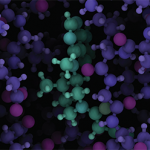
SNOWMASS, COLO.—“We are currently in the era of biologics,” said Gary S. Firestein, MD, dean and associate vice chancellor of translational medicine at the University of California San Diego School of Medicine in La Jolla, Calif., at a session titled, “Primer on Signaling,” here at the ACR Winter Rheumatology Symposium, held January 26–February 1, 2013. “The next wave of therapeutics will most likely focus on small molecules,” including kinase inhibitors, which affect signal transduction, he says. There are many pros and cons with these molecules, and the research is ongoing. As with many therapeutics used for rheumatic disease, the task for clinicians is to weigh the potential benefit against potential toxicities.
Signal Transduction
Signal transduction is a communication system that relays information from the environment to the interior of a cell so it can appropriately respond to stresses, Dr. Firestein said. Kinases are enzymes that participate in signaling cascades that affect cell functions such as mRNA transcription and stability and protein production and stability.
The therapeutic application of kinase inhibitors is under investigation in diverse signaling pathways: examples include mitogen-activated protein kinases (MAPK), Janus kinase (JAK), and spleen tyrosine kinase (Syk). In general, these pathways are systems that sense the environment through a cytokine receptor or immunoreceptor, and via adaptor molecules, initiate a series of events that alter cell function, Dr. Firestein said. Kinases amplify signals by increasing function in an enzymatic cascade.
Big Interest in Small Molecules
Altered cellular signaling is associated with chronic inflammatory disease, and understanding these intracellular pathways might lead to new approaches for treatment, including the use of orally bioavailable small molecules that regulate cytokine function and production.1 Small molecule tyrosine kinase inhibitors such as imatinib and erlotinib are of particular therapeutic interest in cancer because they have broad specificity that probably contributes to efficacy, Dr. Firestein noted, adding that they are also oral and less expensive to produce.
One drawback with small molecules is the potential for toxicity and “off-target” effects compared with antibodies. They are chemically derived, and can effectively block a targeted enzyme, but they also may affect other cellular proteins and cause unexpected side effects. This prompts the question about the importance of selectivity and the best location in the pathway to intercede, Dr. Firestein said. “Do we want to go high in the signaling cascade so there are more pathways affected, but also more toxicity, or farther down where it is more tightly targeted but less likely to work?” he posed.
Targeting p38
Along the MAPK pathway are the p38 kinases. According to Dr. Firestein, “p38 is a natural target for therapeutic interventions, especially inhibitors for inflammatory disease” such as rheumatoid arthritis (RA). The validation for p38, he said, is that it is activated in RA synovium and regulates cytokines and matrix metalloproteinases (MMPs), a large group of enzymes responsible for matrix degradation in RA that contributes to joint destruction. In addition, p38 blocks tumor necrosis factor (TNF) production and decreases fever and cytokines in humans exposed to lipopolysaccharide (LPS).
“The bad news is that it doesn’t work well in RA,” Dr. Firestein said. With more than 20 compounds being investigated in clinical trials, none has progressed beyond phase IIa. Even the best compounds rarely show ACR20 response rates over 40%. Given the evidence of toxicity, these compounds are unlikely candidates for future studies and clinical use, Dr. Firestein said.
JAK Inhibitors
In the JAK signaling pathway for cytokines, JAKs function as dimers by pairing with each other (e.g., JAK1 and JAK3), and there is some ability to have specificity with the various combinations, Dr. Firestein said. JAK1 is a primary signaling pathway for interleukin 6 (IL-6), so a JAK1 inhibitor could function like an IL-6 inhibitor. This feature makes JAK1 of particular interest in RA. JAK1 is also a compelling target in lupus because it blocks interferon signaling. JAK2 has potential for RA by blocking granulocyte-macrophage colony-stimulating factor (GMCSF), but it is also responsible for erythropoietin function. JAK3 is interesting for RA, psoriasis, and transplant therapies because of its ability to block T-cell cytokines.
One problem with JAK inhibitors is the associated toxicities, Dr. Firestein said. In trial, tofacitinib reduced the signs and symptoms of RA but was associated with adverse events including neutropenia, anemia, liver enzymes, lipids, and herpes zoster reactivation.2 These types of adverse events are probably mechanism based, Dr. Firestein said, and are expected by blocking JAK. Tofacitinib is a “pan-JAK inhibitor, but it appears to have greater effect at JAK1 and JAK3 that is probably why you can give a lower dose and not see the profound anemia from JAK2 inhibition,” Dr. Firestein said.
Other JAKs that have been investigated include VX-509, which is a JAK3 inhibitor but also has JAK1/JAK2 activity in vitro. INCB28050 is a JAK1/JAK2 inhibitor, but JAK1 inhibition can also inhibit JAK3, and anemia could be an issue with this molecule due to the JAK2 effects. GLPG0634 is theoretically a pure JAK1 inhibitor, Dr. Firestein said, but blocking JAK1 also may block JAK3, so there may be subtle differences noted in terms of side effects.
Syk Inhibitors
A member of the family of tyrosine kinases, Syk is expressed in B cells, mast cells, neutrophils, macrophages, synoviocytes, and T cells. Like JAKs, Syk is very high in the signaling cascade. Syk also interacts with receptors and turns on secondary messengers that alter gene transcription.
In an animal model of RA (i.e., collagen-induced arthritis), fostamatinib inhibited Syk and resulted in a “dose-dependent improvement in disease severity,” Dr. Firestein said. Benefit was also seen in a passive model of arthritis, which was “suggestive that a molecule like this might be beneficial in RA,” he added. In a trial of RA patients who did not adequately respond on methotrexate, an oral Syk inhibitor (fostamatinib) was significantly superior to placebo with respect to ACR50 and ACR70 at doses of 100 mg twice daily and 150 mg once daily.3 Adverse events included hypertension, diarrhea, and neutropenia.
Fostamatinib is a Syk inhibitor, but it blocks many other kinases, Dr. Firestein said. “We know that it is effective but we don’t know for certain whether Syk is the one that’s responsible for clinical benefit, or for the side effects,” he added.
Evolving Science
The science is still out on kinase inhibitors in terms of the risk–benefit ratio. “There’s no such thing as a free lunch,” Dr. Firestein said. “Sometimes [toxicities] are mechanism based and are therefore unavoidable, but sometimes they are due to off-target effects and can be improved by better drug design.” Toxicity is often involved with host defense, and is often dose limiting.
“In our diseases, we are used to managing toxicity,” Dr. Firestein said of rheumatologists. “Almost all molecules we use have some toxicity, and we manage it. Toxicity can be managed, but a lack of efficacy cannot. We have to be flexible on a pristine safety profile for severe diseases like RA and lupus in order to effectively treat them.”
There’s a long way to go, Dr. Firestein said, and there are many kinase inhibitors currently under investigation. Rheumatologists will be seeing these molecules and many more over the next decade.
Kimberly J. Retzlaff is a medical journalist based in Denver.
References
- Sweeney SE, Firestein GS. Primer: Signal transduction in rheumatic disease—a clinician’s guide. Nat Clin Pract Rheumatol. 2007;3:651-660.
- Kremer JM, Bloom BJ, Breedveld FC, et al. The safety and efficacy of a JAK inhibitor in patients with active rheumatoid arthritis: Results of a double-blind, placebo-controlled phase IIa trial of three dosage levels of CP-690,550 versus placebo. Arthritis Rheum. 2009;60:1895-1905.
- Weinblatt ME, Kavanaugh A, Genovese MC, Musser TK, Grossbard EB, Magilavy DB. An oral spleen tyrosine kinase (Syk) inhibitor for rheumatoid arthritis. N Engl J Med. 2010;363:1303-1312.
